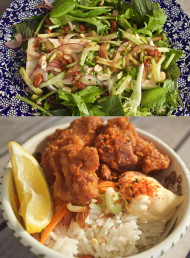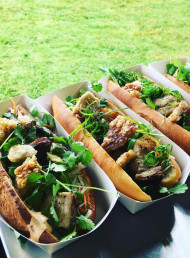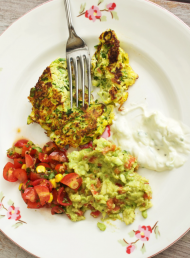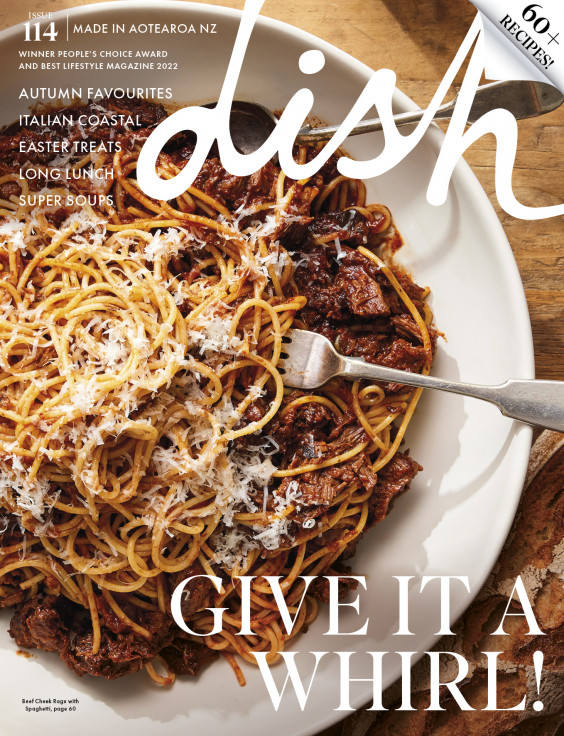Cook the Books - My Street Food Kitchen
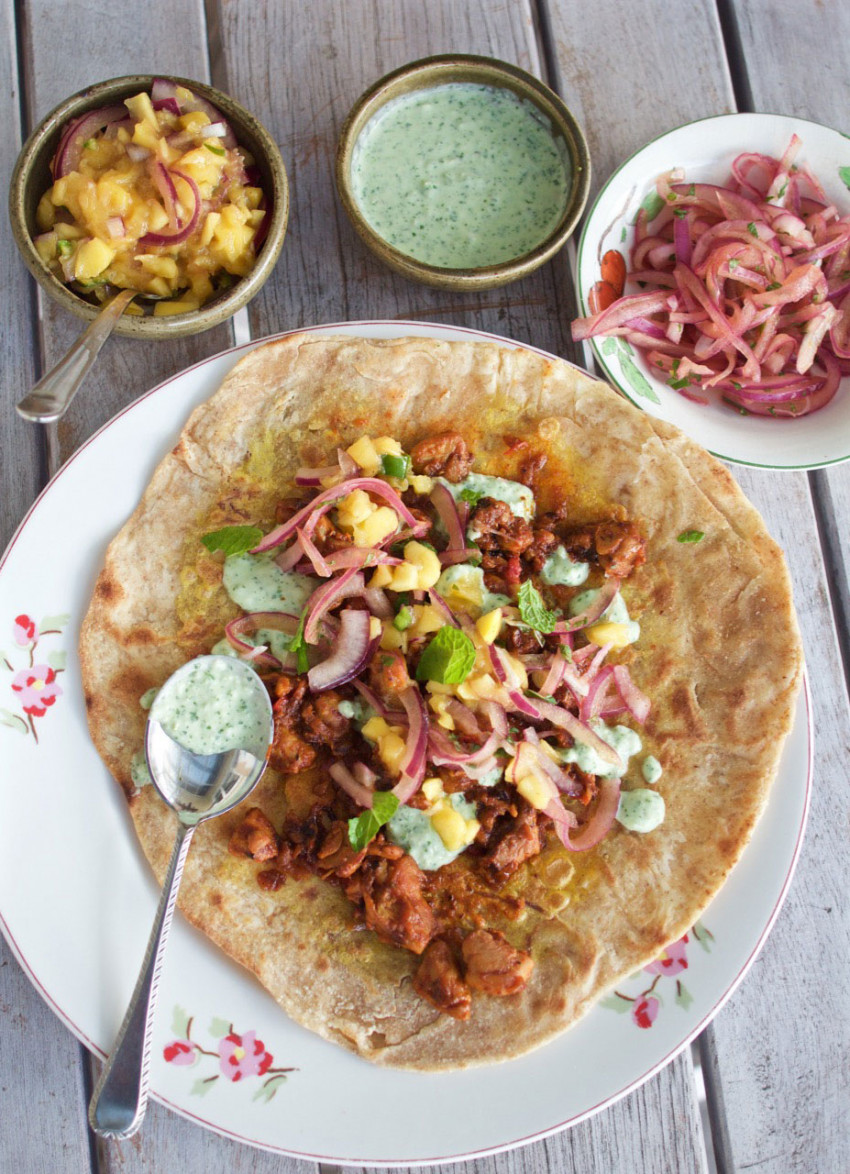
Can simplicity be balanced with authenticity? In this week's review David Parker makes Roti from scratch for the first (and maybe last) time as he tests Jennifer Joyce's latest book.
My Street Food Kitchen is split into eight different sections, ranging from 'New American Food' to 'Middle Eastern Cuisine' to 'Japan & Korea' attempting to recreate classic street food and fast food dishes from across the globe to give a taste of different cultures.
I spent quite some time looking through this book trying to pick something to cook: not that I couldn't find something, more that I found too many dishes I'd like to cook (by cook I mean eat!). I considered the Crisp Artichoke Fritters With Lemon Saffron Aioli, the Bao Buns With Spicy Chicken and the Boiled Pork Dumplings With Tangy Dipping Sauce but finally took a leap of faith and settled on the the Spicy Chicken Roti.
One of my favourite lunchtime treats is taking a little walk up to Satya on Great North Rd where $10.95 will get you a papadom, any curry on their lunch specials list, rice and (most importantly) a Paratha. Soft, buttery, flaky delicious Paratha. This recipe says it’s for a “Roti or Paratha” but having now tried it I know this is very different to the Paratha I have come to know and love and will therefore refer to it as a Roti only.
I started off preparing the chicken filling a night before, first frying onions garlic and fresh ginger. I cut the chicken thighs into bite-sized pieces, added them to the pan and fried until lightly browned. I added the tomato paste, lemon juice, spices and chilli then cooked down until the chicken was fully cooked. The sauce was starting to dry up a little and I added a splash of water so it didn't burn.

Then I put it in the fridge. Really this took me barely any time to make but I wasn't sure how long the Rotis would actually take me to make.
The next day I made the dough for the Rotis — the recipe was a little confusing in places. In the ingredients list it calls for “a tablespoon of melted butter, plus extra for brushing” so I assume the first tablespoon is to go in the dough, but in the recipe it says to “pour the water and vegetable oil” into a well in the centre of the dry ingredients... I hedged my bets and went with oil because I didn't have any melted butter on hand. I kneaded plain flour, wholemeal flour, salt, water and oil with a dough hook in my stand mixer and then left it to rest.
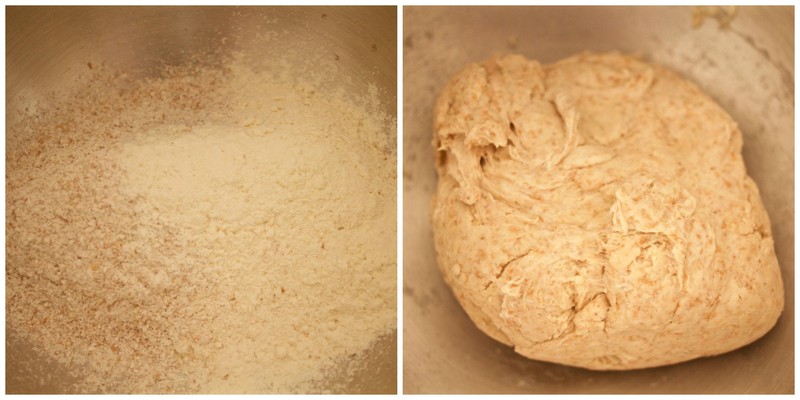
While it was resting I could get on with all the little sides: they were so easy to put together and so delicious. For the Fresh Mango Chutney I diced a mango and into a bowl added sliced red onion, sliced green chilli, cumin, lime juice and a pinch of salt. A little stir and it was done.

The red onion salad was simply a red onion sliced thinly, a handful of chopped mint leaves, the juice of a lime, some chilli powder and a pinch of salt — I combined these in a bowl and that was ready. Next was the the Mint, Green Chilli and Yoghurt Dipping Sauce. I put all of the ingredients into the food processor, pressed a button and it was done. The recipe had asked for two thumb-sized green chillis but my one chilli was definitely two thumbs worth! So simple but so good, this could be served with just about anything.

Now it was time to try and make some Roti. I divided the dough into six equal pieces, rolled them out into 16cm circles, brushed with melted butter and folded in half, then I brushed the folded over side with more melted butter and folded into quarters.

Then I had to attempt to roll out what was now essentially a squishy triangle of dough into a 25cm circle. It took me a couple of attempts to get a round one. They were very thin by the time I got them to the right size, then I could brush with butter and attempt to transport to the frying pan without tearing them. I think if I was making these for guests I would want to practice a few times.
After cooking one side I poured on a couple of tablespoons of beaten egg and flipped the Roti, I could almost do this by hand without burning myself. The egg didn't seem to make much difference, I made a couple without and didn't notice any difference.

I reheated the chicken, and with the Rotis cooked it was time to put one together. All the flavours really came together nicely. On their own each component seemed to be lacking something or had a little too much of something else. The red onion salad was tangy and spicy; the yogurt dipping sauce was sweet but cooling that they balanced each other out.

The fresh mango chutney was excellent. Usually I am not a fan of mango chutney: it's too sweet and I just don't enjoy the texture of it. But the fresh mango chutney had just the right level of sweetness and spice, plus it was so easy!
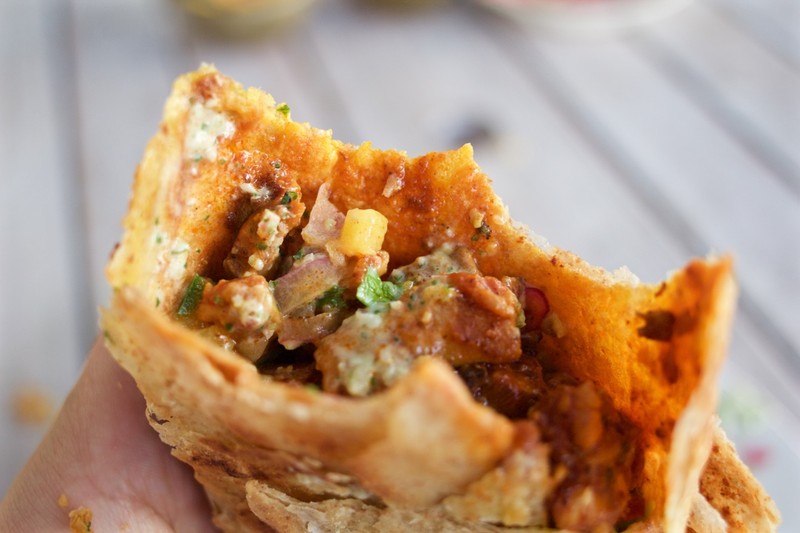
The roti was thin and crispy and buttery, but almost too crispy as they were hard to roll up without flaking everywhere — I was worried that they'd break, but they didn't. They tasted good, but I think I'd be interested to try them with just plain flour (rather than mixing plain and wholemeal) and maybe I'd put a tablespoon of butter instead of oil in the dough, because what recipe couldn't do with more butter?! But in reality if I was doing it again I'd visit my local Indian supermarket and buy frozen roti!
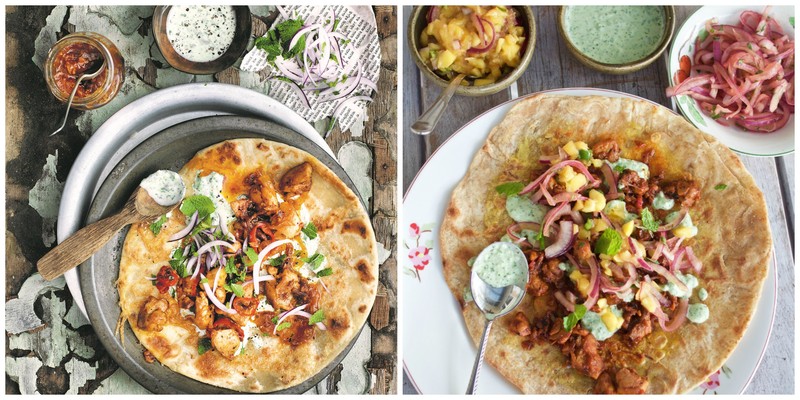
To find out more about My Street Food Kitchen click here.
latest issue:
Issue #114
Autumn has arrived, and with it, the latest issue of dish, jam-packed with recipes that will have you fizzing to get in the kitchen! With a long Easter lunch featuring perfectly pink, blushing roast leg of lamb and wildly decadent baked mashed potatoes with caramelised onions, to simply scrumptious chocolate treats and sensational seasonal baking this issue has you covered - we reckon the Hot Cross Buns are our best yet! Salads make way for soothing soups, pies, puddings and our cover star beef cheek ragù with spaghetti – a must-make dinner for family and friends. With over 60 recipes in our latest issue there’s plenty of inspiration to keep you busy – and well-fed! Don’t forget to share your dish dishes with our Facebook community.

